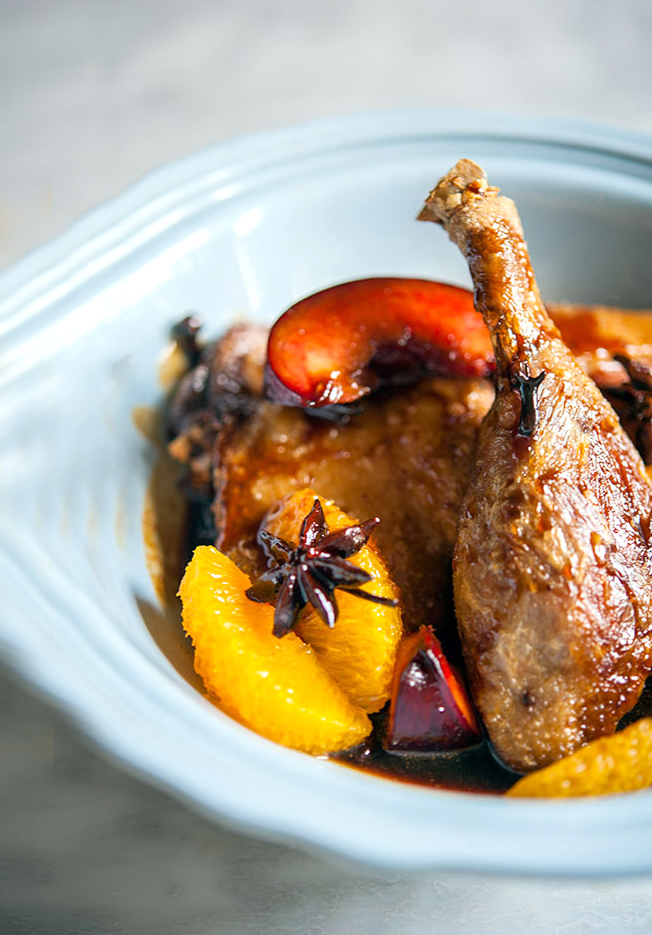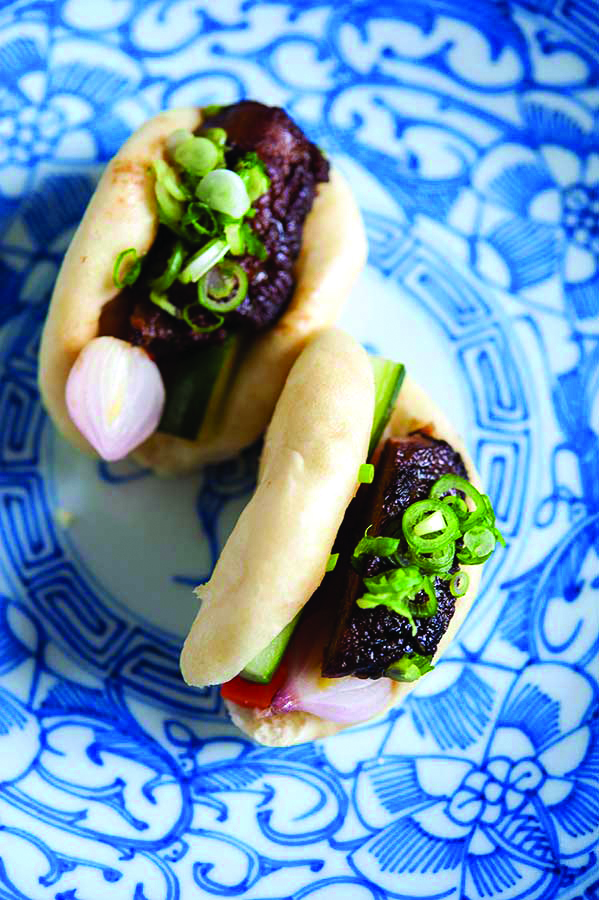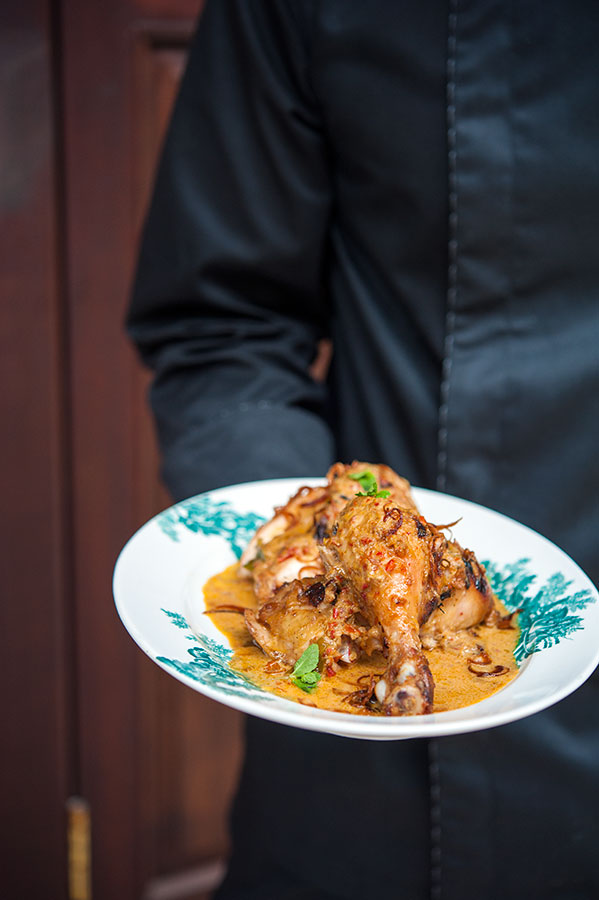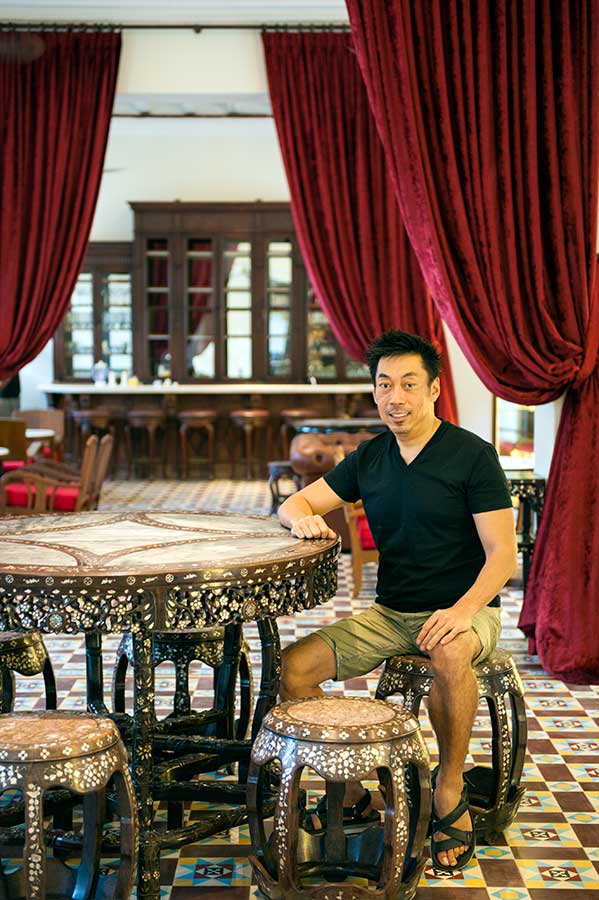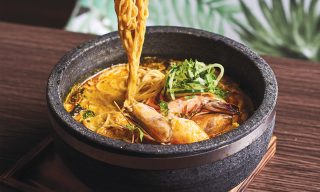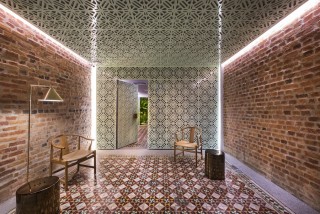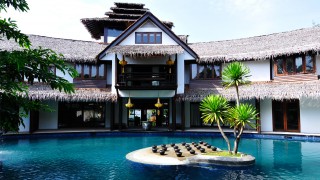A New Take on Nonya
Amid the heritage buildings of Penang’s island capital, a months-old dining room is daring to take Peranakan cuisine in a bold new direction
Photographs & text by Leisa Tyler
Eating in George Town (or anywhere in Penang, for that matter) is a quintessential pastime. Available at any time of the day and always fresh, dishes such as Assam laksa and char kway teow can be found for a dollar or two on every street corner. Rudeness from vendors is tolerated—expected, even—but the slightest slip in taste or quality sees the eatery or street stall abandoned without mercy.
Enter Christopher Ong, a Penang-born Australian hotelier who has recently embarked on what could be the most ambitious and daring project of his career: opening an upscale Nonya restaurant in the city’s UNESCO-listed heritage precinct.
A mélange of Chinese and Malay flavors wedded with hints of Indian and Thai spices, Nonya is the food of the Peranakan, or Straits Chinese, whose forebears—predominantly from Fujian and Guangdong—first settled in peninsular Malaysia centuries ago and began marrying local women. The culinary upshot of this cross-cultural integration is a style of cooking that brings together Chinese delicacies such as fish maw, soya sauce, and fermented soybeans with readily accessible herbs like coriander, lemongrass, and kaffir lime. Elaborate and colorful, Nonya cuisine evolved into a time-consuming and painstaking prop-osition—women would spend hours in the kitchen pounding spices and stirring meats over the stove. Little wonder that in post-colonial times, Nonya cooking, like other Peranakan traditions, began to fade as it fell out of step with modern lifestyles, relegated to festivals and specialty restaurants.
Ong, a fifth-generation Straits Chinese who spent 20 years working as an investment banker in Sydney before opening a boutique lodging in Sri Lanka (Galle Fort Hotel) and eventually relocating to Penang, is now hoping to bring Nonya cuisine into a new era.
“Nonya cuisine was so fuddy-duddy and stuck in the 19th century,” he says. “I would go to Sydney a lot and see Aussie chefs putting contemporary spins on Asian cuisine—Neil Perry and Chinese food; Martin Boetz and Thai—and wonder how we could take Nonya to this next level.”
The fruits of that research are now evident at Kebaya, which opened in November on the ground floor of Ong and partner Karl Steinberg’s new hotel, Seven Terraces. Spanning a row of seven 19th-century Anglo-Chinese terrace houses on one of George Town’s best- preserved streets, Stewart Lane, the once-derelict building took three years to restore. “It had trees growing inside it!” Ong recalls. Today, it has 14 guest rooms furnished with antiques and reproduction Chinese wedding beds, as well as an 18th-century door and screen set that once graced a grand Perana-kan mansion (Ong found them in separate warehouses, where they had been gathering dust for three decades). More decorous and ornamental than Galle Fort Hotel or his other George Town property, Muntri Mews, Seven Terraces is filled with opium beds, alter tables, mother-of-pearl antiques, and gilded lacquerware.
“It would be impossible to re-create this hotel,” Ong says. “For one, I would never be able to find the furniture again.”
Kebaya is similarly lavish, decorated in a Chinese baroque style with geometric tiled floors, marble tables, a teak Art Deco bar, and floor-to-ceiling glass cabinets stacked with antique pottery that Ong began collecting at the age of 12. Yet it’s the food that he hopes will make the biggest impression.
“I spent a year brainwashing my two chefs, Zachary Choong and Kantapat Agecha-suan, about the virtues of local food—that it is delicious and worth learning about,” he says of his Penang-born but French-trained chefs. “Many young Asian chefs are prejudiced; they think local food is cheap and foreign food is better. I took Zac and Kantapat to Saigon to experience the lightness of Vietnamese food, and to Bangkok to taste the depth of Thai cooking. I took them to Sydney so they could see how Asian cuisine has been reinvented in the West and sent them to work in Nahm, David Thompson’s restaurant in Bangkok, so they could learn from a true master.”
Ong is telling me this not in Kebaya, but at Tai Buan Porridge, a dinky Chinese canteen on Muntri Street that specializes in congee with braised duck, pork, and sweet meats. It’s 4 p.m.—too late for lunch, too early for dinner—but the place is full, buzzing with a crowd of Malay-Chinese who are gnawing on bones and slurping back cups of dark pu’er tea. Ong has brought me here to better explain the foundations of his own menu.
“This is classical peasant food,” he says, clutching a slither of pork belly perfumed with soya sauce and a hint of Chinese five-spice between two neon-orange chopsticks. “It’s one of the original dishes that came to Southeast Asia with Chinese immigrants hundreds of years ago. We are taking these basic flavors and enhancing them with prime cuts of meat and using modern kitchen methods.”
Back at Kebaya, Ong presents these basic flavors in a dish called Five-Star Duck. Cooking the fowl sous-vide, his chefs add caramel-ized spiced plums and oranges, cinnamon, cloves, star anise, and nutmeg. It’s gorgeous, with refined and concentrated flavors, the sweet tang of the plums accenting the quintet of spices. Similarly transformed is kau yoke, an assemblage of braised pork belly and poached yam that can be found in several restaurants around town. Here, though, the pork has been tossed with pickled vegetables and stuffed into a soft—and, alas, soggy—bread roll, in a nod to George Town’s British-colonial origins.
Another Nonya classic, ayam kapitan, has also been given a makeover at Kebaya: grilled and finished with a wonderful sauce made entirely from fresh lemongrass, coriander, and galangal. The result has a freshness and a zing to it, and benefits from being less oily than other versions of the dish that I’ve tried. But would purists concur?
“Opening a Nonya restaurant in George Town has been really nerve-wracking,” Ong admits. “On our first night I invited my 82-year-old aunt and her friends to eat. For me, they are the best critics as they are the ones who still remember the way Nonya food used to be cooked. It was the biggest compliment of my life when they all returned with their grandchildren the next night.”
He adds, “Traditionalists may say that the Kebaya is not authentic, but I am the biggest traditionalist there is. We’re not altering Nonya cuisine; we are refining it.”
Kebaya is located at Seven Terraces hotel on Stewart Lane, George Town; 604/264-2333; 7terraces.com
Originally appeared in the April/May 2013 print issue of DestinAsian magazine (“A New Take on Nonya”)


